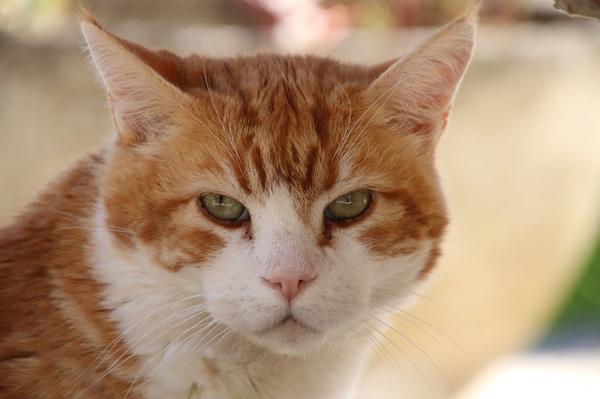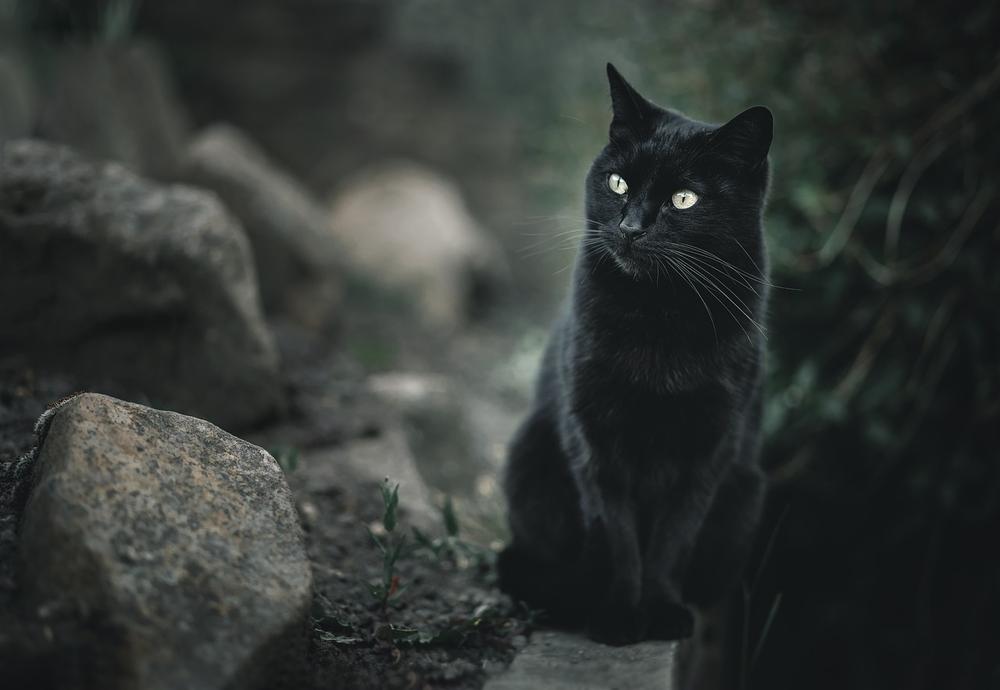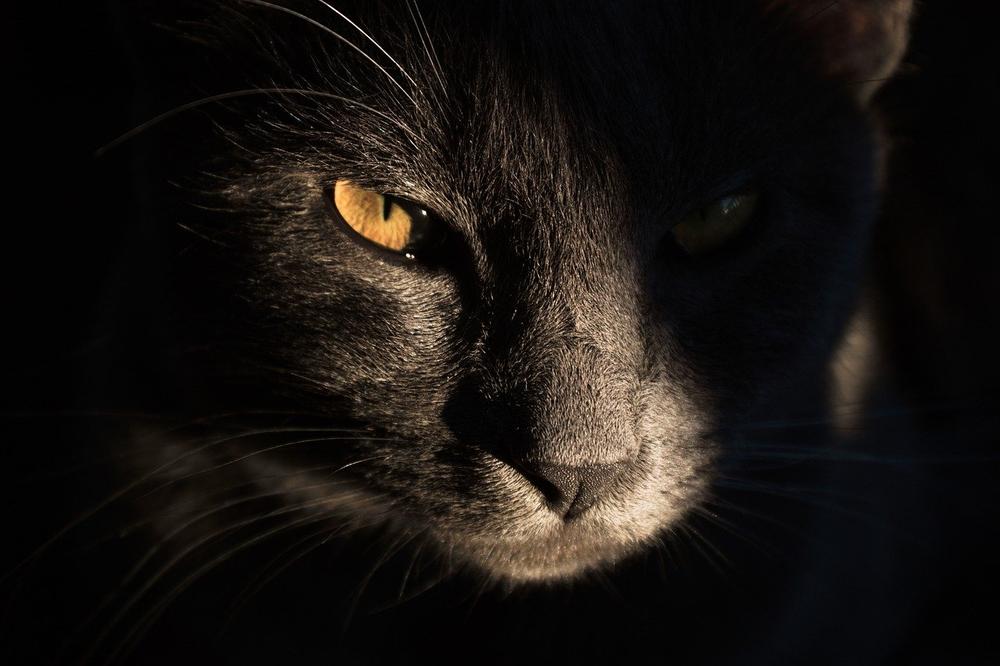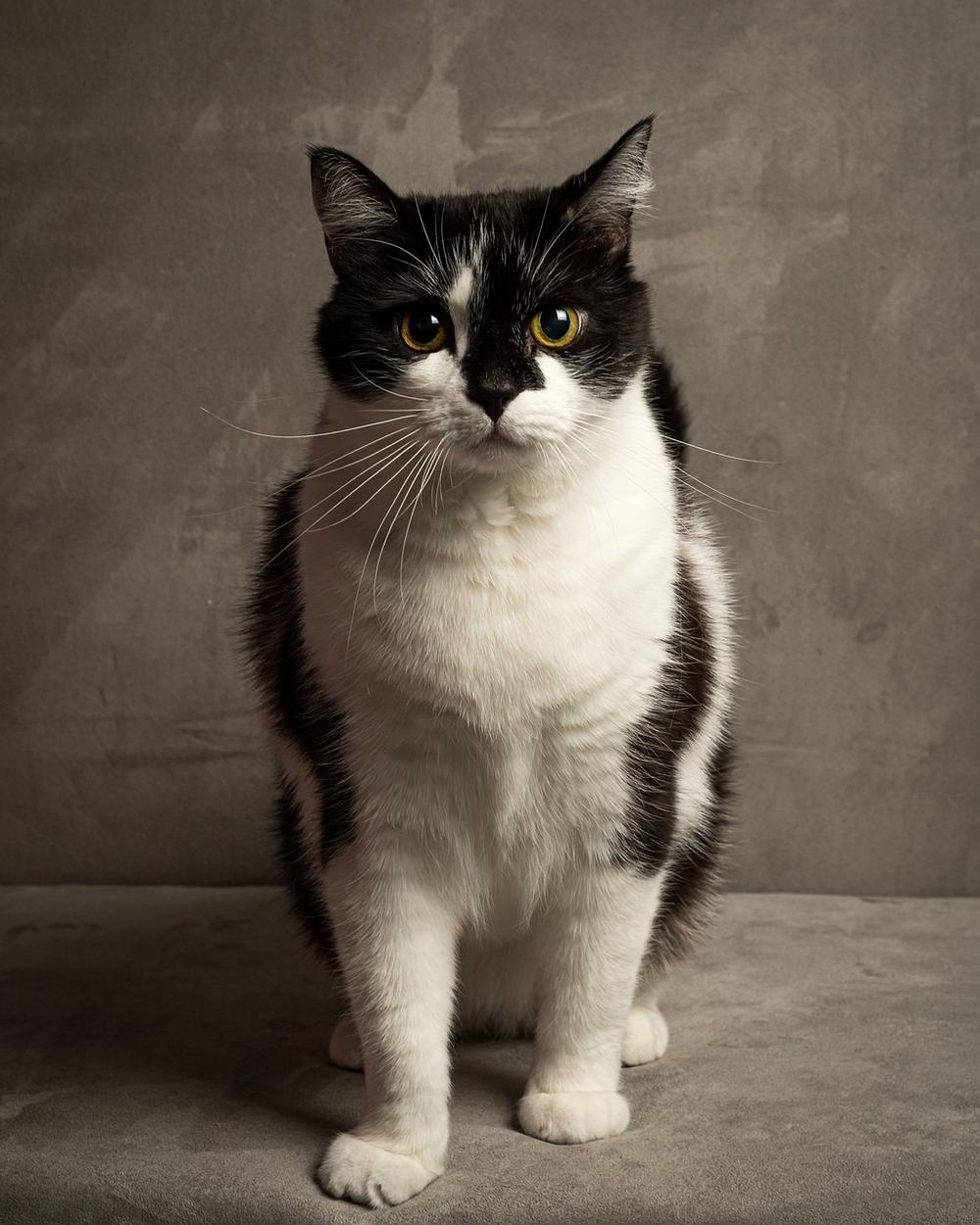Can Cats Be Gay? Unbiased Response by Seasoned Owner

Curious about your furry friend's sexual orientation?
Wondering if cats can be gay?
Hold on tight, because we're about to dive into this wildly intriguing topic. 🐱
You may be thinking, "Wait, can cats really be gay, or am I just projecting my own desires onto my feline companion?"
Well, my inquisitive friend, let's come together and explore the fascinating world of feline sexuality.
Buckle up, for the truth might just surprise you.
Let's begin.
Debunking Myths: Is Cat Homosexuality Real?
While cats may exhibit same-sex behaviors, there is no scientific evidence to support the notion of cat homosexuality as humans define it. These behaviors are often driven by factors such as dominance, pack dynamics, instincts, and hormones, rather than emotional attachment or sexual orientation.
Let's talk straight about cats and their behaviors.
You love to put labels on things, but when it comes to cats and their sexuality, things get messy.
Cats have their own way of expressing themselves that doesn't line up with our human ideas of sexuality.
So, let's be real and dispel this myth once and for all.
The fact is, there's zero scientific evidence to back up the idea that cats can be gay like humans define it.
Their minds and emotions work differently from ours.
And you need to understand the possible reasons behind same-sex interactions in cats.

Some experts say these behaviors stem from dominance, pack dynamics, the sexual reward system, sex drive, hormones, and instincts.
Our feline pals aren't driven by feelings when it comes to reproduction. They're more focused on following their natural instincts and bodily responses.
So, even if cats display behaviors we might label with human terms, we shouldn't jump to conclusions.
Let's fully appreciate cats for who they are:
Unique creatures navigating the world in their own quirky way.
And if you're thinking, "But wait, what happens to our furry friends after they pass away?" Well, I've got just the thing for you – a fascinating exploration of the subject in my guide, Do Cats Go to Heaven.
As someone who believes in providing comforting information, I want to assure you that this post holds the answers you seek.
So, whether you're curious about the afterlife or simply seeking reassurance, take a moment to delve into this thought-provoking read.
Exploring the Concept of Homosexuality in Animals
Humans sure like to project their own ideas of sexuality onto animals.
It's almost like we think everyone experiences it the same way we do.
But the truth is, each species has its own unique reproductive strategies and behaviors.
Take cats for example. Concepts like drag may not accurately apply to their behavior.
They have their own way of doing things!
Now, don't get me wrong, same-sex behavior can be observed in various animal species. However, exclusive same-sex mating behaviors are pretty rare among non-human mammals. There are a few exceptions out there though.
Rams and domesticated sheep sometimes engage in exclusive same-sex relationships.
Who knew?!
But wait, there's more.
Japanese macaques, bottlenose dolphins, and bonobos all exhibit fluid behavior.
That's right. They hop back and forth between opposite and same-gender partnerships.
And here's something fascinating:
Female albatrosses often form lifelong partnerships with other females. Friendship goals, anyone?
Unfortunately, when it comes to cats, determining complex relationships like sexual orientation is a bit tricky.
They just don't have the same complexity that we humans do. ✨
Listen closely, because this is the secret sauce: Further down the blog post, I discuss the importance of acceptance and understanding. So keep reading to discover why embracing diversity in animal behavior is vital for creating a more compassionate world.
But what about our beloved feline friends?
While the topic of homosexuality in cats is relatively unstudied, I am here to delve into their mating habits and social interactions to uncover any possible insights into their sexual orientation or gender identity...
Research Studies on Homosexuality in Cats
Observing the mating habits, social interactions, and related behaviors of cats can provide valuable insights into feline sexuality.

While research on homosexuality in cats is limited, studying these aspects helps shed light on their sexual orientations or gender identities, without resorting to direct questioning.
Cats exhibit a range of behaviors that mirror those seen in humans, including same-sex affiliations, mounting, or dominance displays.
Such observations give us glimpses into their individual preferences, even if we cannot directly ascertain their sexual orientation. By understanding more about feline sexuality through behavioral studies, we gain a deeper appreciation for the complexities of their relationships, helping enhance our bond with these enigmatic creatures.
Factors Influencing Cat's Sexual Preferences
Let me break down the factors that shape cats' sexual preferences for you:
- Hormones are a big player here: During their development, hormonal changes have a strong influence on cats' sexual behaviors and what they're into.
- The environment can mess with their sex too: Take lizards, for example - some species can change their sex based on environmental stuff. It shows how much of an impact the environment has on sexuality.
- Same-sex action is a result of sexual frustration: Cats do the same-sex thing to relieve sexual frustration. It's their unique way of dealing with the reproductive pressures.
- They ain't about that lifelong partnership: Unlike us humans, cats don't stick to one mate forever. They're all about having multiple partners.
- Get your cat 'fixed' to avoid mounting and aggression: Give your furry friend the snip or spay treatment to cut down on humping and aggressive behavior. It helps deal with those unwanted sexual urges.
- Pinning down how long they get busy is tough: With no long-term partners, it's hard to figure out just how long cats engage in sexual behaviors.
- Ladies go through a lot of heat cycles: Female cats go through multiple heat cycles throughout the year, each lasting weeks. Their reproductive patterns are very different from ours humans'.
- Neutering won't remove all the sexual instinct: Even after neutering, male cats may still hold onto some of their sexual instincts.
Gaining insight into these factors offers a peek into the varied realm of cats' sexual inclinations and actions. 😀
Observing Same-Sex Behaviors in Cats
When it comes to observing same-sex behaviors in cats, there are a few things you should know:
- Cats engage in various social behaviors that might be mistaken for homosexuality. Grooming, rubbing against each other, and playing are all common interactions.
- Homosexual behavior is more frequently observed in male cats, but it can also occur in females. Female cats mounting other cats has been witnessed, although it is rare.
- Similar behaviors, like grooming or mounting, can be seen in both dogs and cats. However, these behaviors are usually associated with play, stress relief, or dominance, not necessarily sexual activity.
- Male cats can mount and penetrate each other, but this doesn't indicate a specific sexual orientation. 😺
- Social interactions and play among cats, such as grooming, licking, and scent exchange, are mainly social in nature and not primarily sexual.
- Same-sex mating behavior in cats is often seen as a form of dominance or play rather than being motivated by reproductive purposes.
Now, I know what you're thinking...

If cats are capable of forming close emotional and romantic relationships, just how deep do these connections go?
Are they truly similar to our own human relationships?
Well, let me tell you, the next section will unveil fascinating insights into the emotional lives of same-sex cats...
Cat Bonding: Same-Sex Relationships in Felines
Here's what you need to know about same-sex relationships in cats:
- Same-sex cat bonds help keep the peace.
- These relationships offer emotional backup in the feline world.
- Cats can be tight buddies with their own gender.
- Emotional ties between cats aren't just about making kittens.
- These bonds are more than just physical flings.
- Cats, like us, feel a bunch of emotions.
- Same-sex cat relationships rely on trust and companionship.
- These connections ease stress and anxiety for cats.
- They may even groom each other or have playtime together.
- These cat relationships might go on for ages.
In summary, cats can form cherished friendships with their same-sex pals.
This strengthens social structures and provides emotional grounding for their furry communities.
You should recognize and honor these unique relationships while appreciating the intricate emotional lives of our feline mates.

And now, let's delve deeper into the fascinating world of feline sexuality and reproductive strategies.
Cats, like humans, have unique ways of navigating relationships and expressing their sexual behaviors.
Understanding these differences is crucial in appreciating the intricate lives of our beloved furry companions.
So, join me as I explore the intriguing mating practices of cats and shed light on behaviors that might seem strange to us but are completely natural to them...
Decoding Feline Reproductive Strategies
Female cats prefer variety over exclusivity
When it comes to reproductive strategies, female cats have their own unique approach.
Unlike us humans who tend to stick with one partner, female cats like to keep their options open.
They believe in exploring different relationships rather than settling down with just one mate.
So if you ever see your female cat getting friendly with other tomcats, don't worry. She's not cheating on you.
It's just her way of discovering what she likes and finding the perfect match. After all, everyone enjoys a bit of variety in life, even our feline friends.
Male cats compete to be the 'Top Tom'
On the flip side, male cats have a slightly different strategy when it comes to reproduction.
While females are busy playing the field, males engage in an intense competition to win over mates.
You might have witnessed this fierce battle firsthand.
Male cats can often be seen fighting each other, hissing and growling, trying to establish dominance.
It's like a real-life showdown for them.
This may seem aggressive and territorial, but it's simply nature's way of ensuring that only the strongest and most capable males pass on their genes.
It’s survival of the fittest in the cat world.
Cats show their interest through natural behaviors
Now, let's delve into some intriguing mating behaviors exhibited by cats.
One such behavior is called lordosis or "presenting." This occurs when a female cat crouches down and lifts her tail, revealing her rear end to potential mates.
But before you start thinking that cats are being flirtatious or playing hard to get, rest assured that it’s perfectly normal.
It's just their way of showing their desire to mate.
So next time you witness your female cat striking a pose, don't take it personally or assume she's seeking revenge for something.
She's simply following her instincts and seeking a little feline romance.
Cats have their own unique ways of navigating the world of relationships and reproduction. Understanding their reproductive strategies can help us appreciate and respect our four-legged companions even more.
But there's another important aspect to consider when discussing the possibility of cats being gay.
It involves examining societal attitudes towards homosexuality in humans and how they relate to feline behaviors.
Interested to know more?
Keep reading to uncover the intriguing parallels and discover how embracing diversity can lead to a better understanding of our feline friends:
The Importance of Acceptance and Understanding
In order to create an inclusive environment, you ought to accept and understand different behaviors. This applies not just to humans, but also cats.
When we acknowledge and celebrate the distinctions between feline and human behavior, we gain a deeper understanding of our furry friends.
Recently, there has been talk about homophobia in the cat world.
By drawing comparisons between gay cats and society's views on homosexuality, we can raise awareness and challenge discriminatory attitudes.
If we recognize these connections, we can foster environments that welcome diversity and confront prejudice head-on.
In doing so, we provide spaces where both cats and humans can thrive and be their true selves.
Cats have their own unique personalities and should be able to express themselves without being judged.
Let's champion acceptance and understanding within the feline community because it benefits everyone involved.
Acceptance and Understanding: The Future for Cats
- Cats' sexuality cannot be defined in the same way as humans.
- Scientific evidence does not support the idea of cats being gay.
- Same-sex interactions in cats are often attributed to dominance, pack behavior, and instinct.
- Human social concepts may not accurately apply to cat behavior.
- Same-sex behavior is observed in various animal species.
- Cats' sexual orientation and gender identity are challenging to determine.
- Cats have different reproductive strategies than humans.
- Neutering or spaying pets can prevent mounting and aggression.
- Homosexual behavior among cats is documented in both males and females.
- Same-sex mating behavior in cats is usually seen as dominance or play.
- Cats can form unique emotional and romantic relationships.
- Cats express their interest in mating through specific behaviors.
- Recognizing and celebrating the differences between cats and humans is important.
- Homophobia can exist within the feline community, mirroring societal attitudes.
And that wraps up today's article.
Before you leave, can I ask you something? Did my blog post help you out at all? If it did, it would mean the world to me if you could share it with your friends and family. Just click on any of the social media sharing icons to easily spread the word. Thank you so much!
Talk soon,
-Sarah Davis